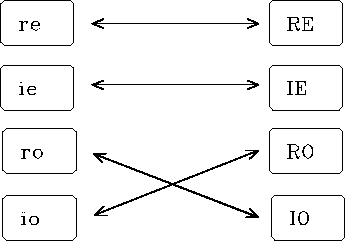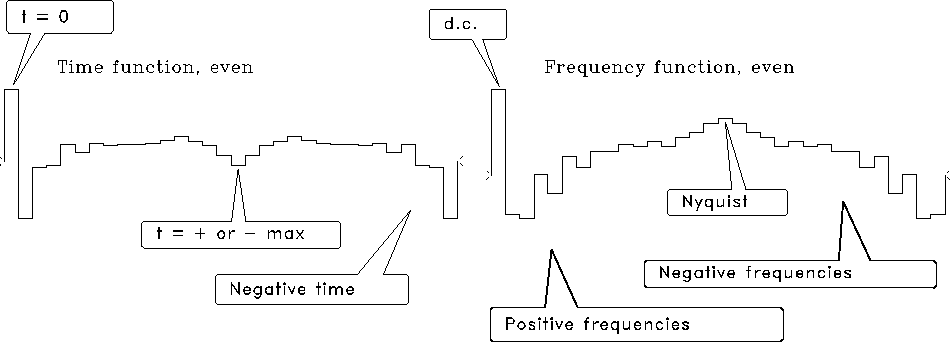| |
(12) |
| |
(13) |
| |
(14) |
Consider a simple, real, even signal
such as (b-1, b0, b1) = (1, 0, 1).
Its transform
![]() is an even function of
is an even function of
![]() , since
, since ![]() .
.
Consider the real, odd signal (b-1, b0, b1) = (-1, 0, 1).
Its transform ![]() is imaginary and odd,
since
is imaginary and odd,
since ![]() .
.
Likewise, the transform of the imaginary even function (i, 0, i)
is the imaginary even function ![]() .Finally, the transform of the imaginary odd function (-i, 0, i)
is real and odd.
.Finally, the transform of the imaginary odd function (-i, 0, i)
is real and odd.
Let r and i refer to real and imaginary, e and o to even and odd, and lower-case and upper-case letters to time and frequency functions. A summary of the symmetries of Fourier transform is shown in Figure 6.
|
reRE
Figure 5 Odd functions swap real and imaginary. Even functions do not get mixed up with complex numbers. |  |
More elaborate signals can be made
by adding together the three-point functions we have considered.
Since sums of even functions are even,
and so on,
the diagram in Figure 6
applies to all signals.
An arbitrary signal is made from these four parts only,
i.e., the function has the form
![]() .On transformation of bt,
each of the four individual parts transforms according to the table.
.On transformation of bt,
each of the four individual parts transforms according to the table.
Most ``industry standard'' methods of Fourier transform set the zero frequency as the first element in the vector array holding the transformed signal, as implied by equation (3). This is a little inconvenient, as we saw a few pages back. The Nyquist frequency is then the first point past the middle of the even-length array, and the negative frequencies lie beyond. Figure 7 shows an example of an even function as it is customarily stored.
 |